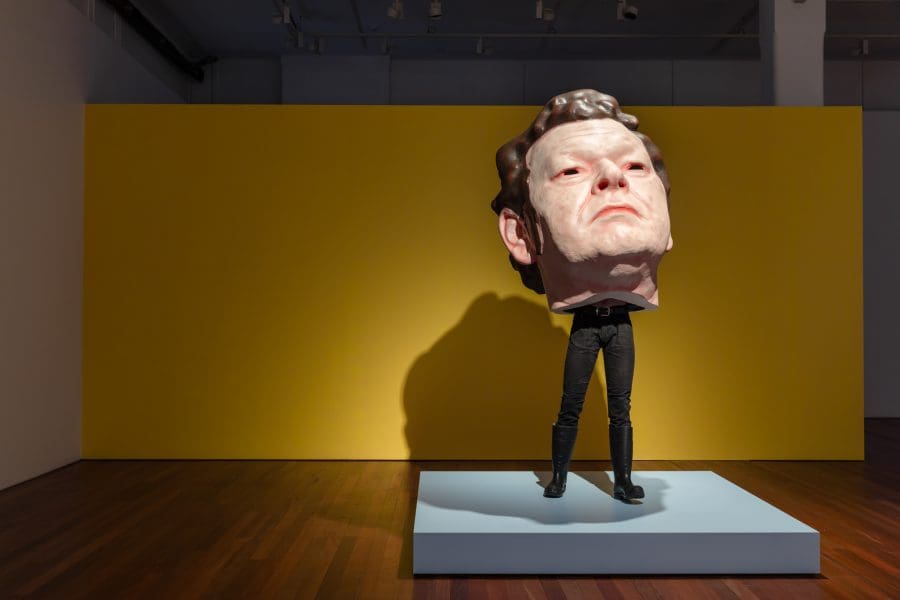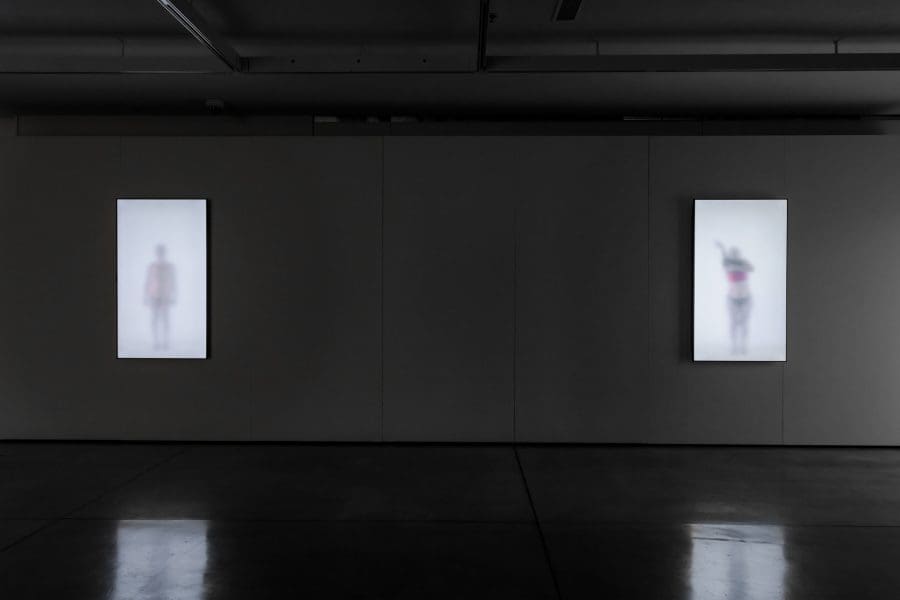
Reframing a Collection
Drawn from the Cruthers Collection of Women’s Art at the University of Western Australia (UWA), Lawrence Wilson Art Gallery’s show Place Makers, reframes the artists—who just happen to be female.

The Other Portrait, curated by Cherine Fahd and Julie Rrap, installation image, SCA Gallery, 2021. Photo: Jacquie Manning. Featuring work by Ronnie Van Hout.

The Other Portrait, curated by Cherine Fahd and Julie Rrap, installation image, SCA Gallery, 2021. Photo: Jacquie Manning. Featuring work by William Yang.

The Other Portrait, curated by Cherine Fahd and Julie Rrap, installation image, SCA Gallery, 2021. Photo: Jacquie Manning.

The Other Portrait, curated by Cherine Fahd and Julie Rrap, installation image, UTS Gallery, 2021. Photo: Jacquie Manning. Featuring work by Julie Rrap and Cherine Fahd.

The Other Portrait, curated by Cherine Fahd and Julie Rrap, installation image, UTS Gallery, 2021. Photo: Jacquie Manning.

The Other Portrait, curated by Cherine Fahd and Julie Rrap, installation image, UTS Gallery, 2021. Photo: Jacquie Manning. Featuring work by Patrick Pound.

The Other Portrait, curated by Cherine Fahd and Julie Rrap, installation image, SCA Gallery, 2021. Photo: Jacquie Manning.
Please note: due to NSW COVID-19 restrictions galleries in Sydney are currently closed.
For Sydney artists Cherine Fahd and Julie Rrap capturing a likeness is merely at the surface of what working with portraiture offers. In curating The Other Portrait, these two artists pursue deeper questions about the transmission of self-image across the gulfs between people. “From the beginning we were thinking about how the term ‘other’ always implicates the self. It’s there in not being said. The idea of the double runs concurrently to the notion of the other,” says Fahd.
Accordingly, The Other Portrait is split in two, divided between the University of Technology Sydney (UTS) and Sydney College of the Arts (SCA) where the curators are academics. Visitors may begin at either gallery, and each of the ten artists in the show has work in both locations.
Coincidently, The Other Portrait runs at the same time as the Archibald Prize, lending an insinuating weight to the word ‘other’ in the title. The celebrity of the Archibald provides a handy yardstick for what conventional, or ‘popularly understood’ portraiture looks like: a kind of sunny island, which Fahd and Rrap have pushed away from, to investigate deeper and curiouser waters. “We can never see ourselves the way others do,” explains Fahd. “You can’t step outside yourself. Something is always hidden. In this way, portraiture can be a nuanced, playful mode of working; a puzzle or question.”
Much of the exhibition comprises photography and video, reflecting the primary mediums of each artist, as well as the screen-mediated manner in which many interpersonal encounters happen in contemporary Australian life. The ascendency of Zoom dinner parties, working remotely, and virtual classrooms marks a new chapter in the perennial pursuit of self-representation, says Fahd. “Photography, painting, drawing: they’re technologies we’ve relied on through the ages to bring us closer to an experience of ourselves. Think about the way people perform for an image they know is going to be viewed or shared. You’re always negotiating who you’re putting out there. That image of you: it’s you, but not you.”

These dualities play out in a photographic self-portrait by Cigdem Aydemir at UTS. “Her face is completely sunburnt and the pattern of the burn is that of a veil, a scarf,” Fahd describes. “It’s this subversive, feminist, Islamic take on Max Dupain’s The Sunbather.” In a film by Aydemir at SCA, the alluded-to scarf is seen billowing energetically, pinned in frame by a melon. “It’s quite a bizarre vision,” says Fahd. “The melon becomes the proxy for the head of the sunbather, to provide a beautifully playful, comic, complex image of race and religion via Australian beach culture.”
Other works pursue a mirrored duality. In Fahd and Rrap’s first collaborative work, the artists appear on twin video screens, one in each gallery space. Fahd is seen disrobing, pitching her garments offscreen. On a screen two kilometres away, Rrap collects the clothes and puts them on. Viewers moving between the galleries fasten their memories of one space to what they see in the other. “It requires some commitment,” explains Fahd. “The viewer must hold something from one space in mind, to extend it, or put two pieces together in the other. It’s a game between two spaces.”
The Other Portrait includes works by Cigdem Aydemir, Simon Cooper, Cherine Fahd, Gabriella Mangano, Silvia Mangano, Sara Oscar, Patrick Pound, Julie Rrap, Ronnie van Hout, and William Yang.
There will be a floor talk on Saturday 3 July, 2-4pm, at SCA Gallery, Covid restrictions permitting.
The Other Portrait
UTS Gallery and SCA Gallery
16 June – 23 July